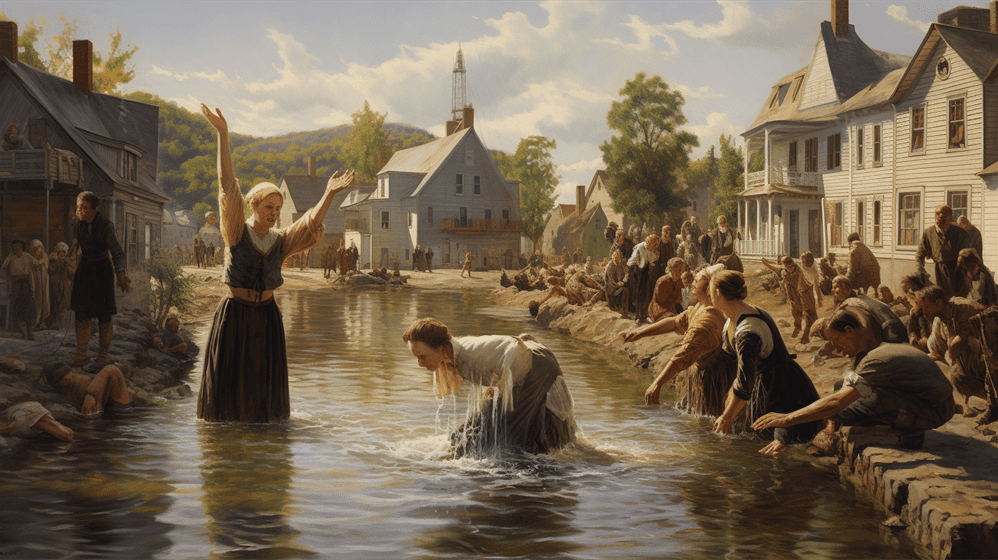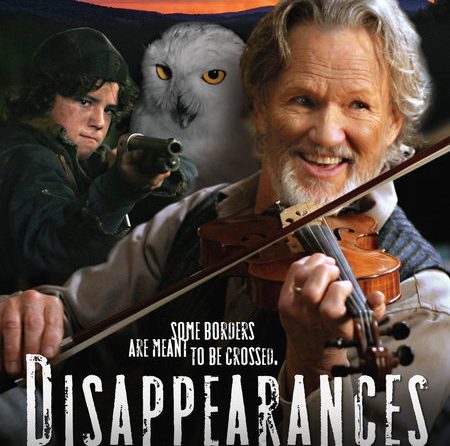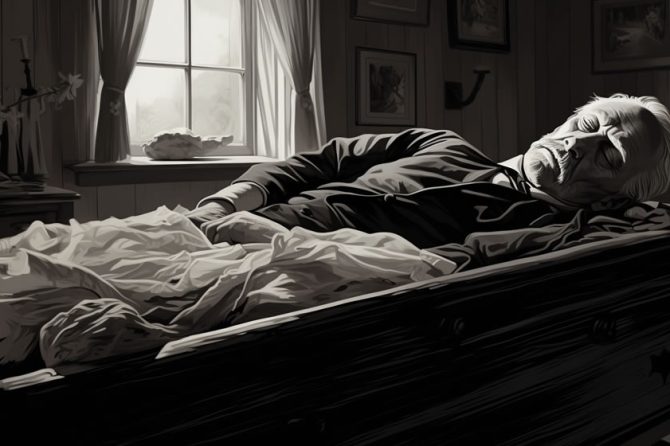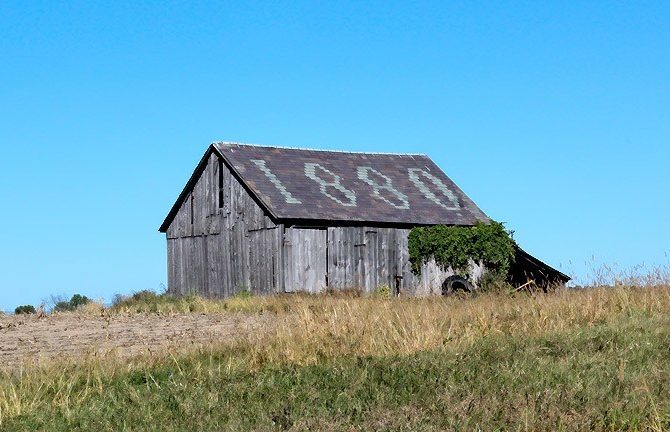The Fascinating and True Story of a Vermont Woman Accused of Witchcraft
In the late 18th or early 19th century, a widow by the name of Krieger (first name unknown) or as “the widow Kreiger”, was accused of witchcraft in the small Vermont town of Pownal. While the exact date is unknown, historians believe the trial took place sometime between 1760, when Pownal was chartered, and the 1820s, when belief in witchcraft began declining.
Krieger, likely of Dutch descent, was accused of “possessing extraordinary powers.” While not directly labeled a witch, the accusation aligned with the common practice of accusing elderly widowed women of sorcery and communication with the devil.
Witchcraft Fears Beyond Salem
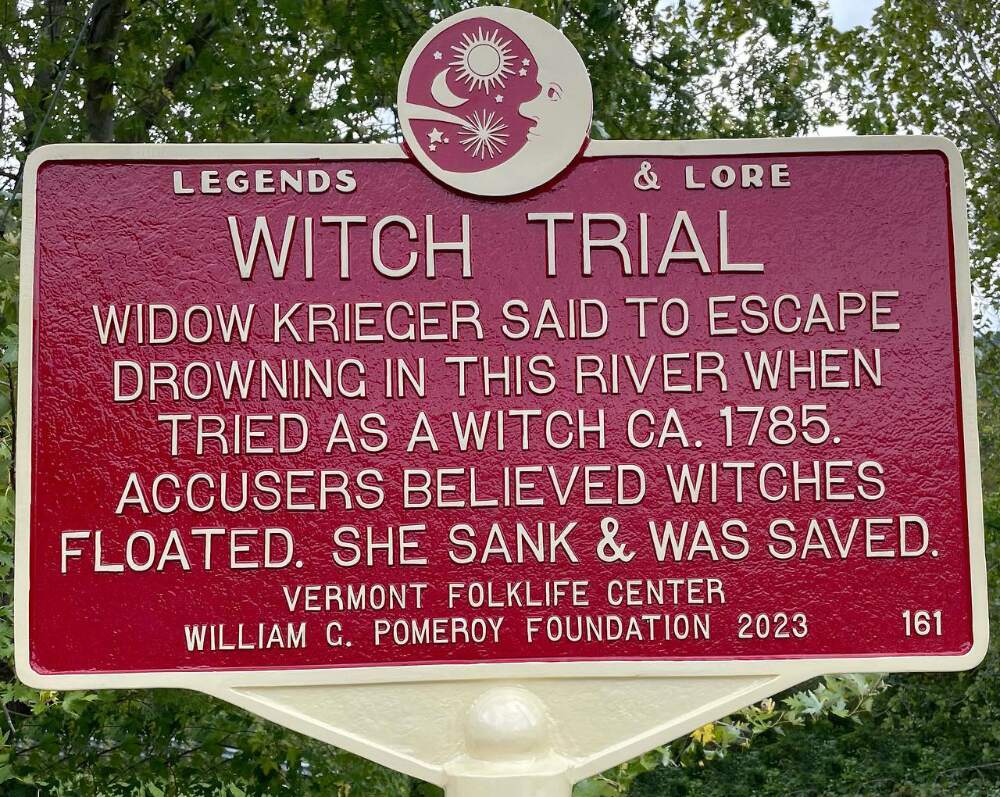
Discover how the witch trial of the widow Krieger reveals the enduring fears of witchcraft and accusations that extended beyond the infamous Salem trials, casting a shadow over the early decades of the 19th century.
The Pownal witchcraft trial, where the widow Krieger stood accused, serves as a chilling reminder of the persistent fears surrounding witchcraft in the years following the well-known trials in Salem, Massachusetts. Taking place in the 18th century, this enigmatic trial sheds light on the continued belief in supernatural powers and the willingness to accuse individuals of witchcraft.
Throughout history, the fear of witchcraft held a firm grip on society, causing widespread panic and suspicion. Accusations often stemmed from perceived unusual behavior or talents, as was the case with Krieger. Her alleged extraordinary powers led to public scrutiny and ultimately her trial in Pownal. The dunking test, whereby she was submerged in the Hoosic River to determine her guilt or innocence, highlights the extreme measures taken to dispel suspicions.
Suspicions Raised Fears and Rumors of Witchcraft
As misfortunes befell the town, suspicions rooted themselves in the fertile soil of fear. Milk pails sat bare as cows' udders withered. Feathered bodies vanished from coops, leaving only drifting feathers. The widow Krieger, with her piercing eyes and midnight hair, became the target for the townspeople's building dread. Rumors of witchcraft began metastasizing through the town.
They dragged the spindly widow to the riverbank, where the icy water glinted ominously in the twilight. The zealots presented her with two paths to vindication: survive an axe splitting her very bones as she lay upon a tree, or plunge into the frozen abyss.
The Widow Krieger chose the chilling embrace of the river
To test the accusation, Krieger underwent a “trial by water” in which she was thrown into the frozen Hoosic River. The superstitious belief was that a witch would float, upheld by the devil, while an innocent woman would sink. When Krieger sank to the bottom of the river, the townspeople took it as proof of her innocence and pulled her from the water, saving her life.
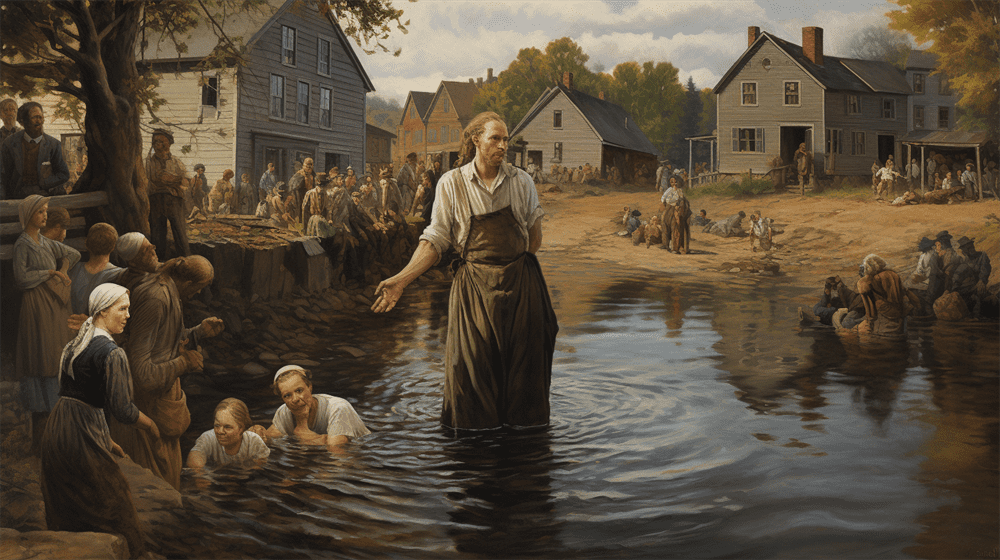
While no grave or official records confirm Krieger's fate after the trial, it is believed she survived the ordeal and continued living in Pownal. The trial stands as the sole documented witch trial in the state of Vermont. Though it claimed no lives, it serves as a stark reminder of the irrational hysteria surrounding witchcraft accusations in New England during the late colonial era.
The Dunking Test and Its Outcome
“The widow Krieger was suspected of possessing extraordinary powers, leading to her being subjected to the infamous dunking test. To the astonishment of onlookers, she sank like a stone, contradicting the popular belief that witches floated. Saved by townspeople, she escaped a damning fate, leaving the community perplexed and unsure of her true nature.”
Historian T.E. Brownell documented this intriguing witch trial in the 19th century, providing crucial insight into the beliefs and events that unfolded during that time. Brownell's book serves as a valuable historical source, enabling us to delve deeper into the enigma surrounding Krieger and the circumstances of her trial.
While the witch trial of Krieger stands as Vermont's sole known case, it exemplifies the widespread fears and accusations that perpetuated beyond the borders of Salem. Pownal itself, with its unique and enigmatic history, witnessed other strange phenomena, such as the stone-throwing devil in 1874 and the presence of renowned seer Clara Jepson. These occurrences further fuel the intrigue surrounding the town and its connection to the supernatural.
As we continue to unravel the mysteries of Pownal's past, the search for Krieger's final resting place remains ongoing. Though no gravestone has been discovered, the presence of Krieger's Rocks near the North Pownal Bridge serves as a haunting reminder of her alleged powers and the witch trial that forever etched its mark on the town's history.
| Key Points: | |
|---|---|
| • The Pownal witchcraft trial sheds light on enduring fears of witchcraft beyond the Salem trials | |
| • Accusations against Krieger highlight the continued belief in supernatural powers | |
| • T.E. Brownell's book is a valuable source of information about the trial | |
| • The witch trial showcases Pownal's enigmatic history and other strange occurrences | |
| • The search for Krieger's final resting place continues |
Pownal's Enigmatic History
Uncover the mysterious tapestry of Pownal's history, where the witch trial of the widow Krieger is just one thread woven into a fabric of strange occurrences, including stone-throwing devils and a renowned seer. Nestled in the picturesque landscape of Vermont, this quaint town holds secrets that continue to intrigue and bewilder.
In 1874, Pownal was gripped by the stone-throwing devil phenomenon, which left residents perplexed and terrified. Mysterious stones would rain down upon unsuspecting villagers, seemingly defying the laws of nature. To this day, the cause of this bizarre occurrence remains a subject of speculation and wonder.
But the enigma of Pownal doesn't stop there. The town was also home to Clara Jepson, a renowned seer. Her remarkable ability to foresee events and provide guidance captivated the town's residents. Whether it was a premonition of a calamity or a glimpse into the future, Clara Jepson's presence added another layer of mystique to Pownal's history.
Pownal's Unexplained Phenomena
Amidst this backdrop of intrigue, the witch trial of the widow Krieger stands as a testament to the enduring fears and suspicions surrounding witchcraft. As one of the few documented witch trials outside of Salem, Massachusetts, Krieger's plight shines a spotlight on the persistence of these beliefs well into the 18th century.
To explore Pownal's enigmatic history is to delve into a world where realities blend with the supernatural, where stories of witches, stone-throwing devils, and seers intertwine. As the Pownal Historical Society and the Bennington Museum prepare to unveil a historical marker commemorating the widow Krieger's trial, we are reminded of the rich tapestry of mysteries that make Pownal a place unlike any other.
| Key Points: | Details: |
|---|---|
| Pownal's Strange Occurrences: | Stone-throwing devils and Clara Jepson, the renowned seer. |
| Widow Krieger's Trial: | A witch trial in the 18th century that sheds light on the persistence of witchcraft fears. |
| Historical Marker: | The Pownal Historical Society and the Bennington Museum are planning a “Witches Walk” to dedicate a historical marker commemorating Krieger's trial. |
The Legacy and Search for Widow Krieger
Reflect on the enduring legacy of the widow Krieger as we investigate the search for her final resting place, the absence of a gravestone, and the intriguing presence of Krieger's Rocks in Pownal.
The mysterious witch trial of the widow Krieger in Pownal, Vermont has left an indelible mark on the town's history. While the exact year of the trial remains unknown, the search for Krieger's final resting place continues to captivate historians and locals alike.
Despite extensive efforts, no gravestone has been discovered thus far, leaving her final resting place shrouded in mystery. However, the presence of Krieger's Rocks near the North Pownal Bridge adds to the intrigue surrounding her story. These rocks serve as a tangible reminder of the enigmatic figure who was suspected of possessing extraordinary powers and underwent the infamous dunking test in the Hoosic River.
The absence of a gravestone and the presence of Krieger's Rocks highlight the enduring legacy of the widow Krieger. They serve as constant reminders of the witch trial that took place in Pownal, Vermont, the only known case of its kind in the state. The trial itself reveals the persistence of fears and accusations related to witchcraft, extending beyond the well-known Salem trials and into the early 19th century.
The Uncertain Timeline
Tracing back the events of the witch trial becomes a challenging task as we navigate the uncertain timeline of Krieger's trial, piecing together clues from the early settlement history of Pownal. The exact year of the trial is unknown, but it is estimated to have taken place after 1760, based on the settlement of the Krieger family in Pownal and the town's charter.
Pownal, Vermont, has a rich history shaped by Dutch families who first settled in the area in the 1600s. The Widow Krieger, believed to be a member of one of these Dutch families, found herself at the center of a witch trial that remains shrouded in mystery. The trial occurred after the infamous witchcraft trials in Salem, Massachusetts, which took place in 1692-93.
Historians have relied on the book compiled by T.E. Brownell in the 19th century to gain insight into the events surrounding Krieger's trial. However, this historical documentation provides limited information, leaving many questions unanswered.
| Key Facts | Timeline |
|---|---|
| Widow Krieger's suspected trial year | Unknown (Est. after 1760) |
| Settlement of Krieger family in Pownal | Before 1760 |
| Salem witchcraft trials | 1692-93 |
| Publication of T.E. Brownell's book | 19th century |
The widow Krieger probably descended from the first Dutch souls to settle the virgin lands along the snaking Hoosic River. They cultivated the fertile banks and fished the shimmering waters in the days when New York belonged to the Netherlands. After the English wrested control from the Dutch, the village was christened Pownal in 1760, bearing the name of a far-off royal governor.
Historical Documentation by T.E. Brownell
Explore the primary historical source that sheds light on the enigmatic witch trial of the widow Krieger – the book compiled by esteemed historian T.E. Brownell. Brownell's work provides valuable insights into the peculiar events surrounding Krieger's trial, offering a unique perspective on this mysterious chapter in Vermont's history.
“The Trials and Tribulations of the widow Krieger: Unraveling the Secrets of Pownal's Witchcraft” is a remarkable compilation of firsthand accounts, court records, and witness testimonies meticulously gathered by Brownell over several decades. His dedication to preserving the details of this peculiar trial has enabled future generations to unravel the enigma surrounding Krieger.
Brownell's book allows readers to delve into the mindset of the era and understand the deep-rooted fears and superstitions that permeated Pownal during that time. Through immersive narratives, the pages of this historical tome bring to life the atmosphere of uncertainty and suspicion that gripped the community.
However, it is important to approach the contents of Brownell's book with a critical eye, as it is a historical document that reflects the beliefs and biases of the time. While it provides valuable insights, it should be considered alongside other historical sources to paint a comprehensive picture of this captivating witch trial.
| Key Details: | |
|---|---|
| Author: | T.E. Brownell |
| Publication Year: | 19th century |
| Primary Sources: | Court records, witness testimonies, firsthand accounts |
| Subject: | Witch trial of Widow Krieger in Pownal, Vermont |
No headstone stands testament to the widow's earthly days, no memorials carved for forgotten Krieger bones…
Yet her name endures, bestowed upon the ancient rocky outcroppings that loom over the river, north of the village. Kreiger's Rocks have weathered centuries gazing down on the Hoosic's winding path, retaining their Dutch name like an echo from the valley's past. Perhaps somewhere in the widow's vanished history, she too rested upon these stony precipices, gazing out over the lands the Dutch settlers would one day call home.
Despite the challenges posed by the uncertain timeline, the witch trial of the widow Krieger in Pownal, Vermont, remains an intriguing and enigmatic piece of history. As historians and researchers continue to delve into the town's unique past, the search for answers and the truth behind Krieger's story will continue.
Are there any connections between the Alburgh Vermont Missile Silo and the “Trial by Water” event in Pownal?
The history of alburgh vermont missile silo holds no direct connections to the Trial by Water event in Pownal. While both events have historical significance, they are separate events with distinct contexts and narratives. The Alburgh Vermont Missile Silo was a significant Cold War military installation, while the Trial by Water event in Pownal refers to a historical legal case involving an individual accused of witchcraft in the late 18th century.
Conclusion
Unraveling the bizarre witch trial of Margaret Krieger in Pownal, Vermont has revealed a chilling saga of suspicion, dunking tests, and enduring fears of witchcraft, leaving us with more questions than answers.
Believed to be Vermont's only witchcraft trial, the widow Krieger, was accused of possessing extraordinary powers and subjected to the infamous dunking test in the Hoosic River. However, contrary to the belief that witches would float, she sank and was rescued by townspeople, adding to the enigmatic nature of her story.
The exact year of Krieger's trial remains unknown, but it is estimated to have taken place after 1760, following the settlement of the Krieger family in Pownal and in the aftermath of the Salem witch trials. This unique trial is described in a 19th-century book compiled by historian T.E. Brownell, adding to our understanding of the case.
Pownal, Vermont itself has an enigmatic history with other strange occurrences, including the infamous stone-throwing devil phenomenon in 1874 and the presence of renowned seer Clara Jepson. The legacy of the widow Krieger continues to intrigue and the ongoing search for her final resting place has led to the discovery of Krieger's Rocks near the North Pownal Bridge, but no gravestone has been found.
Thank you for visiting Vermonter.com! Please subscribe to our email list for the latest articles!


